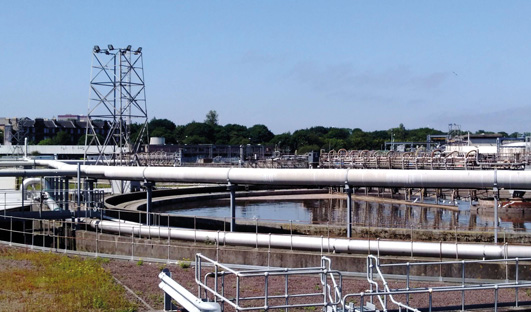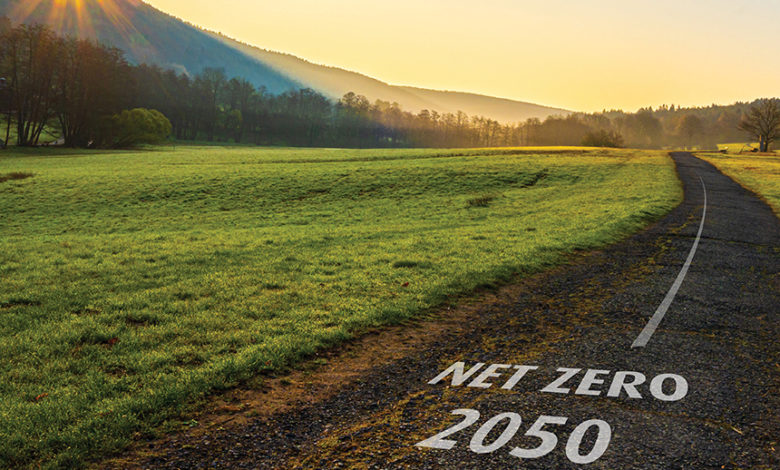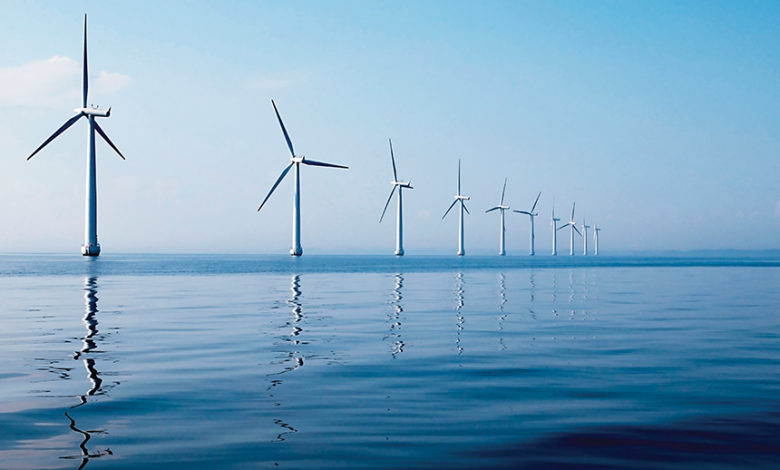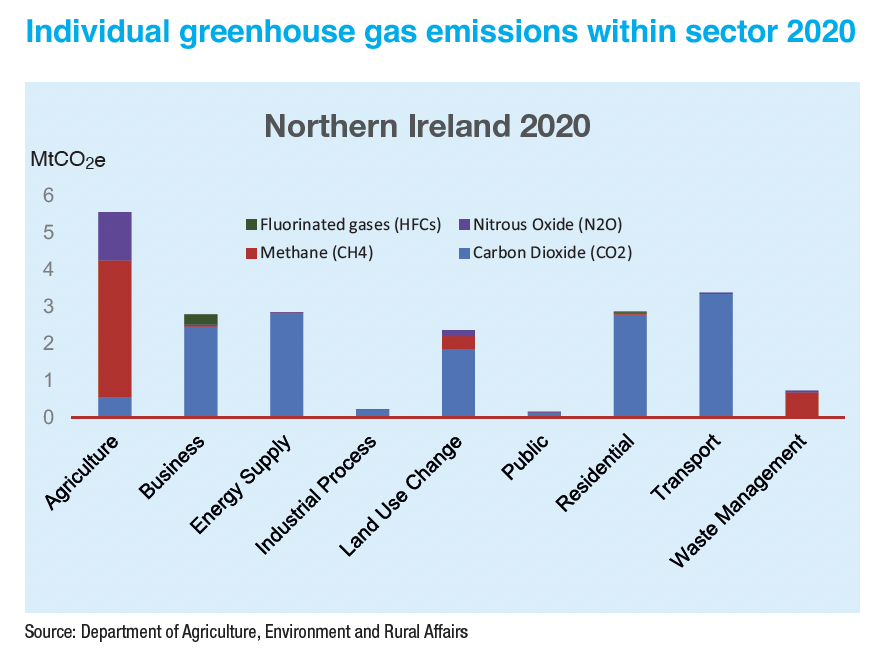
European water policy priorities
3rd January 2023
Cross-border cooperation necessary to combat climate change
3rd January 2023Northern Ireland’s greenhouse gas emissions have reduced at a much slower rate than other regions over the UK in the past two decades.
Statistics from the Department of Agriculture, Environment and Rural Affairs show that, between 1990 and 2020, Northern Ireland’s greenhouse gas emissions fell by 23.9 per cent, compared to an overall UK reduction of 49.9 per cent.
In the same time period, Scotland’s greenhouse gas emissions were reduced by 51 per cent, and Wales’ greenhouse gas emissions went down by 40 per cent.
Northern Ireland’s greenhouse gas emissions accounted for 5.2 per cent of the overall UK numbers, despite only accounting for 2.8 per cent of the population. The Climate Change Act (Northern Ireland), passed by the Assembly in February 2022, commits Northern Ireland to achieving net zero greenhouse gas emissions by 2050.
By sector, agriculture had the largest emissions, accounting for 26.6 per cent of emissions. Transport contributed 16.2 per cent to overall emissions, whilst the residential, energy supply and business sectors contributed 13.7 per cent, 13.6 per cent, and 13.4 per cent, respectively.
The 2020 figures have the important caveat of the one-off reduction in car and air transport for the duration of the lockdowns during this period of the pandemic, with the reduction in road traffic having accounted for 84.9 per cent of the reduction in transport emissions. Aviation accounted for 11.6 per cent of the decrease. It is likely that 2021 figures will show these sectors will have contributed significantly more greenhouse gas emissions than occurred in 2020.
Agriculture and the Climate Change Act
Agriculture contributed a far greater proportion of greenhouse gas emissions in Northern Ireland compared with the other regions of the UK. The corresponding figures for England, Wales, and Scotland stood at 9.0 per cent, 15.6 per cent, and 18.4 per cent, respectively.
The Department of Agriculture, Environment and Rural Affairs stated that, in 2021, there was an annual increase in the number of cattle to the tune of 4.4 per cent compared with the 2020 figures, with additional increases in the numbers of sheep and pigs. In addition, total greenhouse gas emissions from the agricultural sector have increased by 5.8 per cent since 1990.
Northern Ireland has the lowest proportion of farmland under organic management in the UK. The area of land farmed organically in Northern Ireland has remained at 8,000 hectares between 2016 and 2021. The UK overall recorded an increase of 4 per cent, from 489,000 hectares in 2020 to 507,000 hectares in 2021.
The Climate Change Act commits Northern Ireland to achieving a 46 per cent reduction in methane emissions by 2050, a target which has been met with criticism, with an earlier bill proposed by former Green Party MLA Clare Bailey having targeted net zero of methane emissions. Methane currently accounts for 22.9 per cent of greenhouse gas emissions in Northern Ireland.
Methane emissions in Northern Ireland accounted for 9.3 per cent of the UK’s overall methane emissions.
The legislation which was passed, was designed to offset cost concerns of the Minister for Agriculture, Environment and Rural Affairs, Edwin Poots MLA, who claimed that the initial net zero methane emissions target would “cost an additional £1 billion per year”. Poots’s initial proposal outlined a targeted 82 per cent reduction in greenhouse gas emissions, before the overall net zero target.
Carbon emissions
In terms of CO2 emissions specifically, Northern Ireland had a per capita emission of 11 tonnes. Meanwhile, the UK’s average CO2 emissions per capita were almost half that figure, at 6 tonnes. CO2 accounted for 67.8 per cent of Northern Ireland’s greenhouse gas emissions in 2020, with the Climate Change Act targeting net zero CO2 emissions by 2050, a reduction of 100 per cent from the 1990 figures.
Northern Ireland’s net greenhouse gas emissions in 2020 were estimated to be 20.9 million tonnes of carbon dioxide equivalent (MtCO2e). This net figure is a result of an estimated 22.0 MtCO2e total emissions, offset by 1.1 MtCO2e of emissions removed through sequestration.
In order to transition to net zero by 2050, the Climate Change Act requires the Executive to set transitionary targets in the intervening periods of 2030 and 2040, which must be done within 24 months of the legislation gaining royal assent.
Reduction in CO2 emissions requires plans of action to be set out by the various departments, including the Department for Infrastructure, such as transitioning away from petrol and diesel cars, which will be banned in the UK by 2030. With no functioning Executive, these actions have not been set out.







 Ossian Smyth TD
Ossian Smyth TD Florika Fink-Hooijer
Florika Fink-Hooijer Antoine Oger
Antoine Oger Laura Curtis-Moss
Laura Curtis-Moss Anthony Costello
Anthony Costello Anja Murray
Anja Murray Niall Ó Donnchú
Niall Ó Donnchú Mike Savage
Mike Savage Brian Carroll
Brian Carroll Claire Downey
Claire Downey Oisín Coghlan
Oisín Coghlan Stephen Onakuse
Stephen Onakuse Kevin O’Sullivan
Kevin O’Sullivan Susan Hegarty
Susan Hegarty Hendrik W van der Kamp
Hendrik W van der Kamp Philip Nugent
Philip Nugent Adrian Smyth
Adrian Smyth Ainhoa Gonzalez Del Campo
Ainhoa Gonzalez Del Campo Geoff Doole
Geoff Doole Clare Pillman
Clare Pillman David Greenfield
David Greenfield Danielle Conaghan
Danielle Conaghan Peter McEvoy
Peter McEvoy Triona McGrath
Triona McGrath J Owen Lewis
J Owen Lewis Gavin Smith
Gavin Smith Imelda Hurley
Imelda Hurley Lucy Gaffney
Lucy Gaffney Dr Venkatesh Kannan
Dr Venkatesh Kannan Kevin Hegarty
Kevin Hegarty Eimear Cotter
Eimear Cotter Aditya Arora
Aditya Arora Patric Child
Patric Child Eleanor Roche
Eleanor Roche Andy Bleasdale
Andy Bleasdale Andrew Muir MLA
Andrew Muir MLA Chris Hewitt
Chris Hewitt Francesca Racioppi
Francesca Racioppi Danielle Conaghan
Danielle Conaghan Christopher Hammond
Christopher Hammond Laura Díaz Anadón
Laura Díaz Anadón Lorna McAdoo
Lorna McAdoo Conor Murphy
Conor Murphy Mark Horton
Mark Horton Niall McLoughlin
Niall McLoughlin Zoe Kavanagh
Zoe Kavanagh Niall Ó Donnchú
Niall Ó Donnchú Venkatesh Kannan
Venkatesh Kannan David McGee
David McGee Anna Rose
Anna Rose Paul Hogan
Paul Hogan






















 Levent Ergin
Levent Ergin Veronica Manfredi
Veronica Manfredi Francis Finnerty
Francis Finnerty  Timmy Dooley TD
Timmy Dooley TD  Julie Thompson
Julie Thompson  Mark Thuillier
Mark Thuillier  Martin Hutchings
Martin Hutchings  Mark Nolan
Mark Nolan